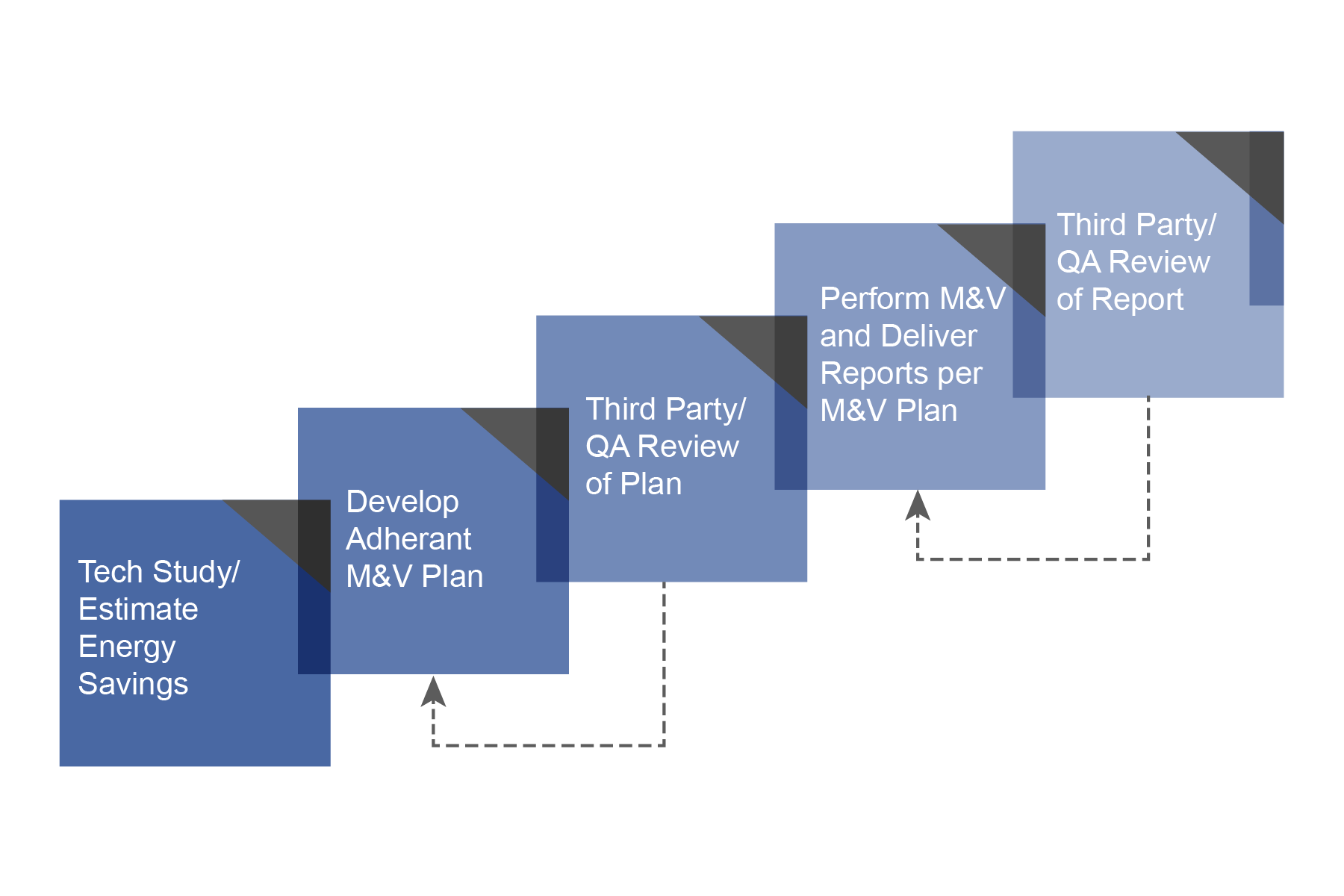“Measurement and Verification” (M&V) is the process of planning, measuring, collecting and analyzing data for the purpose of verifying and reporting energy savings within an individual facility resulting from the implementation of energy conservation measures (ECMs). Savings cannot be directly measured, since they represent the absence of energy use. Instead, savings are determined by comparing measured use before and after implementation of a project, making appropriate adjustments for changes in conditions.
M&V activities consist of some or all of the following:
- meter installation calibration and maintenance,
- data gathering and screening,
- development of a computation method and acceptable estimates,
- computations with measured data, and
- reporting, quality assurance, and third party verification of reports.
When there is little doubt about the outcome of a project, or no need to prove results to another party, applying M&V methods to calculate savings may not be necessary. However, it is still wise to verify (initially and repeatedly) that the installed equipment is able to produce the expected savings. Verification of the potential to achieve savings is referred to as operational verification, which may involve inspection, commissioning of equipment, functional performance testing and/or data trending. IPMVP-adherent M&V includes both operational verification and an accounting of savings based on site energy measurements before and after implementation of a project, and adjustments.
M&V is not just a collection of tasks conducted to help a project meet IPMVP requirements. Properly integrated, each M&V task serves to enhance and improve facility operation and maintenance of savings. As shown in the figure below, M&V activities overlap with other project efforts (e.g. collecting data to both identify ECMs and establish energy baselines, commissioning and operational verification of installed ECMs, and installing monitoring systems to track and maintain savings persistence, etc.). Identifying these project synergies and establishing roles and responsibilities of involved parties during project planning will support a coordinated team effort. This can leverage complementary scopes and control M&V-related costs.


